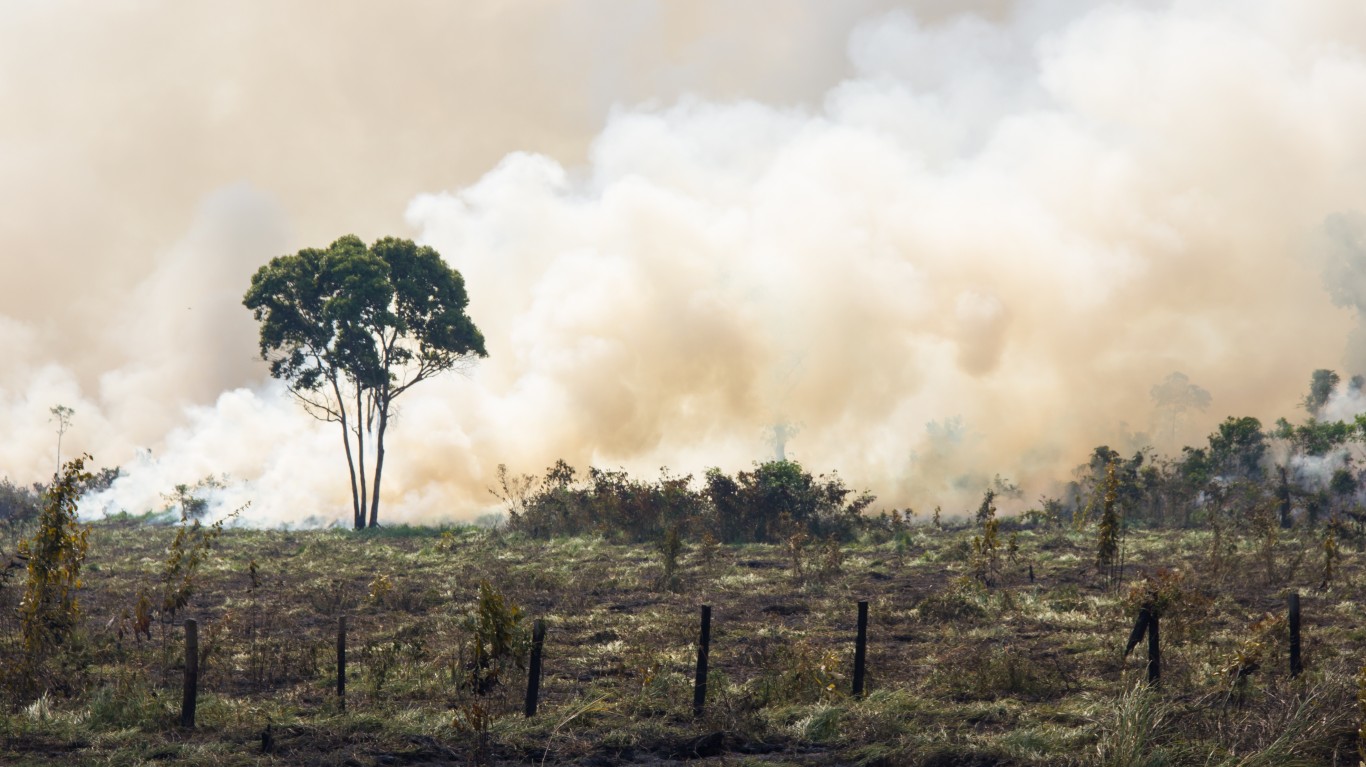Economy
The facts behind the shock headlines about the Amazon's net carbon emissions

Published:

By David Callaway, Callaway Climate Insights
This column is for Callaway Climate Insights subscribers only, but it’s OK to share once in a while. Was it shared with you? Please subscribe.
(Michael Molinski is a senior economist at Trendline Economics. He’s worked for Fidelity, Charles Schwab and Wells Fargo, and previously as a foreign correspondent and editor for Bloomberg News and MarketWatch.)
PLAYA DEL REY (Callaway Climate Insights) — Research published last week in the journal Nature for the first time provides scientific evidence that the parts of the Amazon are emitting more carbon into the atmosphere than they are absorbing.
As the largest tropical rainforest, the Amazon has long acted as a carbon sink by absorbing much of the world’s carbon emissions. But data now indicate the region has reached a critical tipping point and its emissions absorption is in decline.
The study area, which represents about 20% of the Amazon basin, has lost 30% of its rainforest. “Using nearly 10 years of CO₂ measurements, we found that the more deforested and climate-stressed eastern Amazon, especially the southeast, was a net emitter of CO₂ to the atmosphere, especially as a result of fires,” said John Miller, a scientist with NOAA’s Global Monitoring Laboratory and a co-author of the report. “On the other hand, the wetter, more intact western and central Amazon, was neither a carbon sink nor source of atmospheric CO₂, with the absorption by healthy forests balancing the emissions from fires.”
“The paper is excellent,” said Paulo Artaxo, a global climate change researcher at the University of Sao Paulo. “It emphasizes other similar findings by other research groups using very different techniques.”
Deforestation and regional climate change may be threatening the atmospheric carbon buffering potential of the Amazon rainforest, suggests a paper in Nature. Some regions are shown to be emitting more carbon than they absorb. https://t.co/3GKZ7OVqeD pic.twitter.com/zHhZiRaJyV
— nature (@Nature) July 14, 2021
The research is not the first to report that human-caused deforestation, rising temperatures and lower rainfall as a result of climate change are endangering the role that the Amazon plays in the tenuous global balance of scale.
We reported it in a two-part series about Amazon deforestation late last year. And the magazine National Geographic reported similar findings in March, writing that the Amazon is a “net contributor to warming of the planet, according to a first-of-its-kind analysis from more than 30 scientists.”
But the research for the first time links in-depth scientific measurements taken over a long period of time that levels of absorption and carbon emissions are now at net zero, at least in the eastern part of the Amazon. The study measured carbon dioxide and monoxide levels from small planes during some 590 flights over the span of eight years, between 2010 and 2018.
The Nature study reports “that the intensification of the dry season and an increase in deforestation seem to promote ecosystem stress, increase in fire occurrence, and higher carbon emissions in the eastern Amazon.”
Artaxo points out, “But it is important to say that the eastern part of Amazonia is emitting more carbon than absorbing” while “western Amazonia continues to absorb carbon, having a net effect of sequestering carbon from the atmosphere.”
The eastern part of the Amazon is home to many soy growers and cattle ranching and gold miners, while the western part of the Amazon continues to grow wild, for now.
For its part, the Brazilian government points out that it has taken massive efforts to bolster the fight against deforestation since the data for the Nature study was collected. But many environmentalists and indeed the Biden administration considers those actions as cover-ups while the government continues to allow private interests to deforest the Amazon.
“Brazil is the largest emitter of carbon in Latin America by far, and that is not because of the economic recession or the pandemic. It’s because the administration of President Jair Bolsonaro has chosen not to enforce laws against deforestation of the Amazon and has stopped financing alternative energy,” said Carlos Rittl, former director of Brazil’s Climate Observatory and now a senior fellow at the Institute for Advanced Sustainability Studies in Potsdam, Germany.
In December, Brazil renegotiated its Paris Agreement goals, essentially promising the same thing it did in 2015, to reduce carbon emissions by 43% by 2030. Yet Brazil’s net carbon emissions continue to go up, not down, so the likelihood that Brazil will accomplish those goals by 2030 is highly unlikely.
The Nature study also points to the fact that deforestation is not the only guilty party here. We have to reduce fossil fuel burning in developed countries in addition to stopping deforestation,” Artaxo says. “Climate change is destroying the sink of tropical forests. This is the message. Not just deforestation, but also climate change.”
This post is only for paying subscribers of Callaway Climate Insights.
Free Callaway Climate Insights Newsletter
Retirement can be daunting, but it doesn’t need to be.
Imagine having an expert in your corner to help you with your financial goals. Someone to help you determine if you’re ahead, behind, or right on track. With SmartAsset, that’s not just a dream—it’s reality. This free tool connects you with pre-screened financial advisors who work in your best interests. It’s quick, it’s easy, so take the leap today and start planning smarter!
Don’t waste another minute; get started right here and help your retirement dreams become a retirement reality.
Thank you for reading! Have some feedback for us?
Contact the 24/7 Wall St. editorial team.